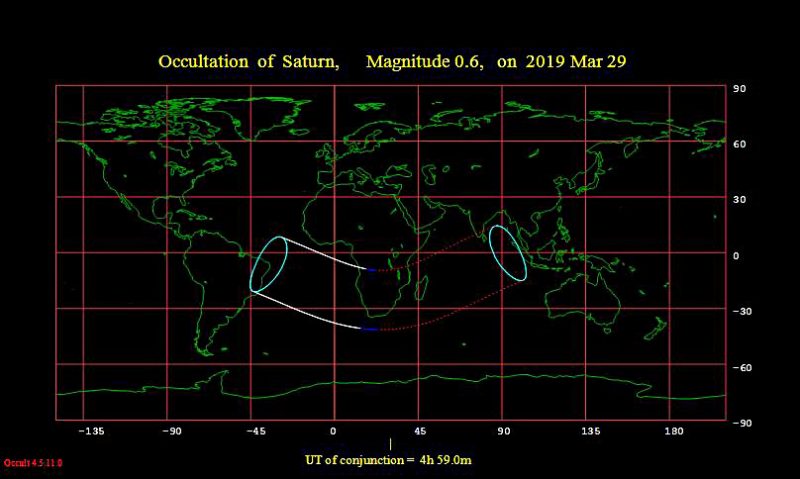These next several mornings – March 26-29, 2019 – look for the waning moon passing by Jupiter and then Saturn in the early morning sky. You’ll look south from Earth’s Northern Hemisphere, but from the Earth’s Southern Hemisphere, look high overhead or high in the northern sky.
If you do go outside and look before sunup, you can’t miss Jupiter and the moon. Jupiter, the king planet in our solar system, ranks as the fourth-brightest celestial object in all the heavens, after the sun, moon and planet Venus. It outshines Saturn by 13 times.
Still, Saturn isn’t too shabby either, when it comes to brightness. It shines as brightly as a 1st-magnitude star, that is, as brightly as the brightest stars visible in Earth’s sky. You’ll also want to look for Saturn along the ecliptic, or path traveled by the sun and moon across our sky.
Meanwhile, there’s also an even-brighter planet visible before sunup, too, not shown on the chart at top. Look at the chart and photo below, and watch for Venus in the east before sunup. Venus shines some five times more brightly than Jupiter and 65 times more brightly than Saturn.


Venus is the brightest planet and the third-brightest celestial body overall. It’s low in your eastern sky an hour or so before sunrise. By the time that Venus climbs over the horizon in the glow of twilight, Saturn might or might not still be visible in your sky.
For the fun of it – on the chart at the top of this post – we show the dwarf planet Pluto quite close to Saturn on the sky’s dome on the feature sky chart. However, you’re very unlikely to see this distant world, even with a telescope. After all, Pluto is nearly a million times fainter than Saturn, and it’s more than two thousand times fainter than the faintest star visible to the unaided eye on a dark, moonless night.
On March 29, 2019, the moon will occult Saturn; in other words, as seen from parts of Earth, the moon will cover Saturn, blocking it from view. Then, some seven hours later, the moon will occult Pluto. See the chart below, which shows where the Saturn occultation will be seen. Also, click here for info on both occultations.

After the moon has gone past Jupiter, Saturn and Pluto, be sure to watch for the waning crescent moon to sink closer to Venus in late March and early April 2019.

Bottom line: On March 26-29, 2019, enjoy the picturesque morning drama, as the moon moves past Jupiter and then Saturn in the predawn/dawn sky. Also, watch for Venus near the sunrise!











